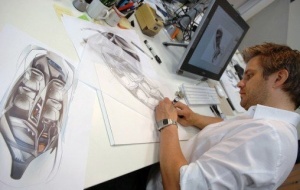When you have defined who you are as a brand, part of this process is what consumer/athlete defines you and their desired lifestyle. This “core” audience principle is driven by Lifestyle and Aspiration, each are not mutually exclusive, but rather they work together to define what a brand stands for in your target audience’s eyes.
This message becomes unclear when you position yourself as something you are not, which is part of your defining Lifestyle principle. When this principle positioning is not clearly shown in everything you are as a brand, (i.e, messaging, viral, imagery, creative, lifestyle, products…) the message become blurred. Be “true” to yourself, and the “heart and soul” of the brand. Always, always be asking, “Is this right for the Brand”, and if you have clearly defined who you are, an image of right vs wrong should send sirens ringing in your head.
Staying true to your “roots” that have anchored your brand message is the most creditable way to build and sustain long term growth with your consumer. Many brands have tried to move outside the zone of this message, and as a result they neither stay true to their customers or the brand, and authentication evaporates…
Stay “True”
Stay “Authentic”
Stay “Alive & Thrive”
Enjoy the Ride..!
Bryan Smeltzer




